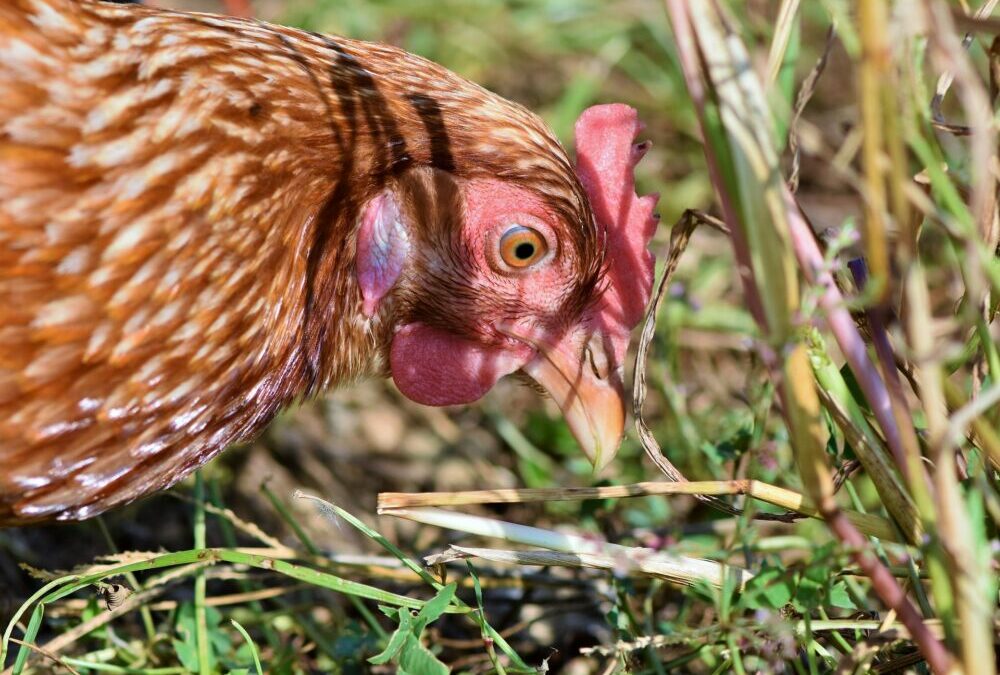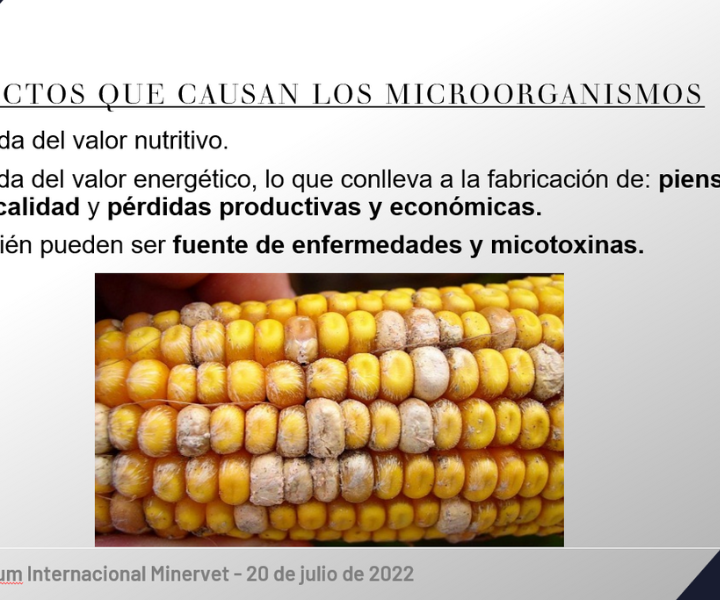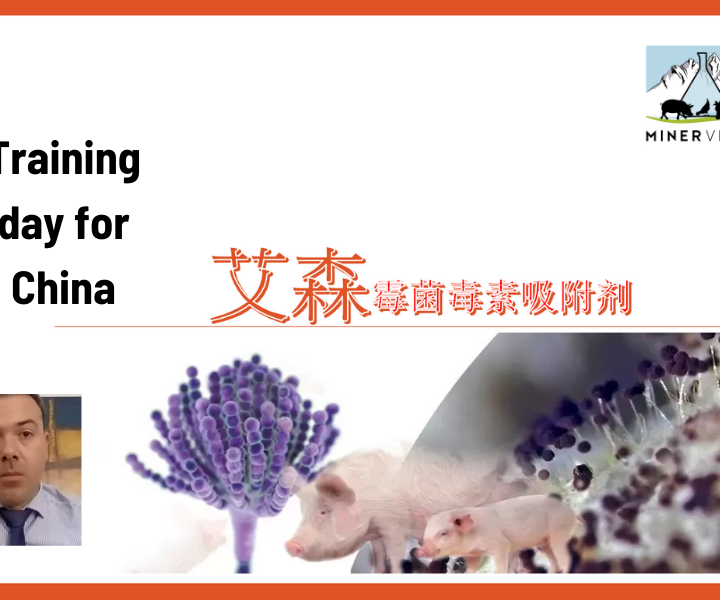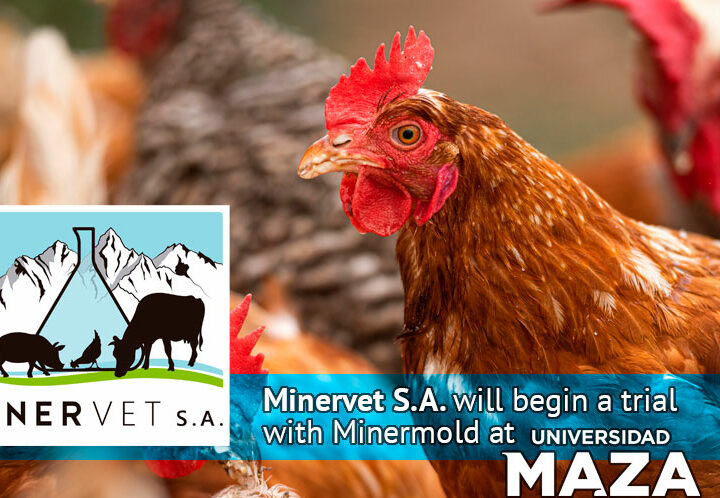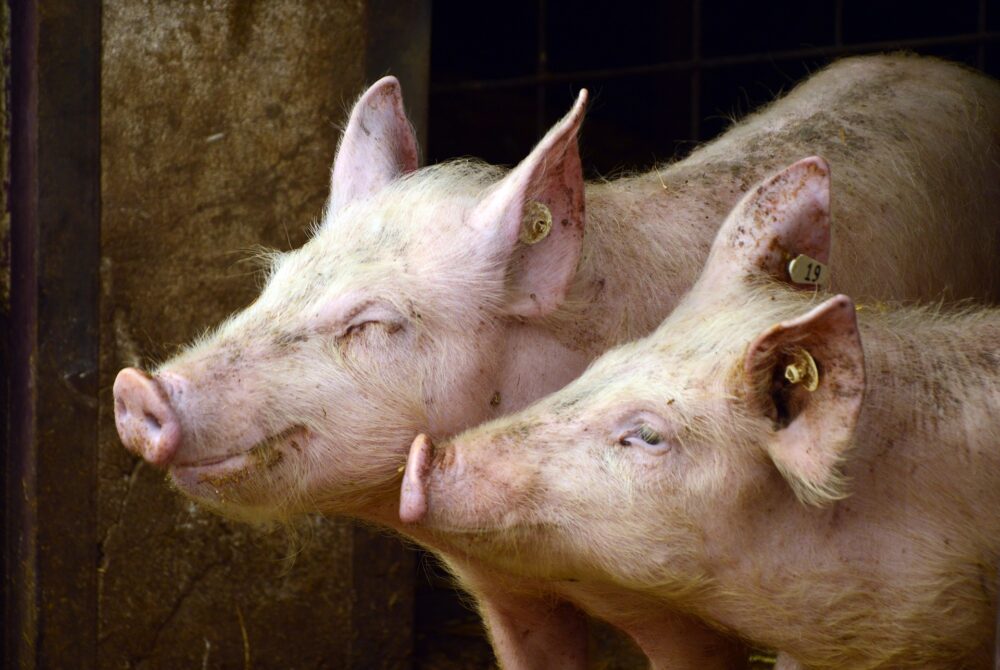
Update on the status of mycotoxin in raw materials destined for the swine feed industry in Latin America
11 de May de 2020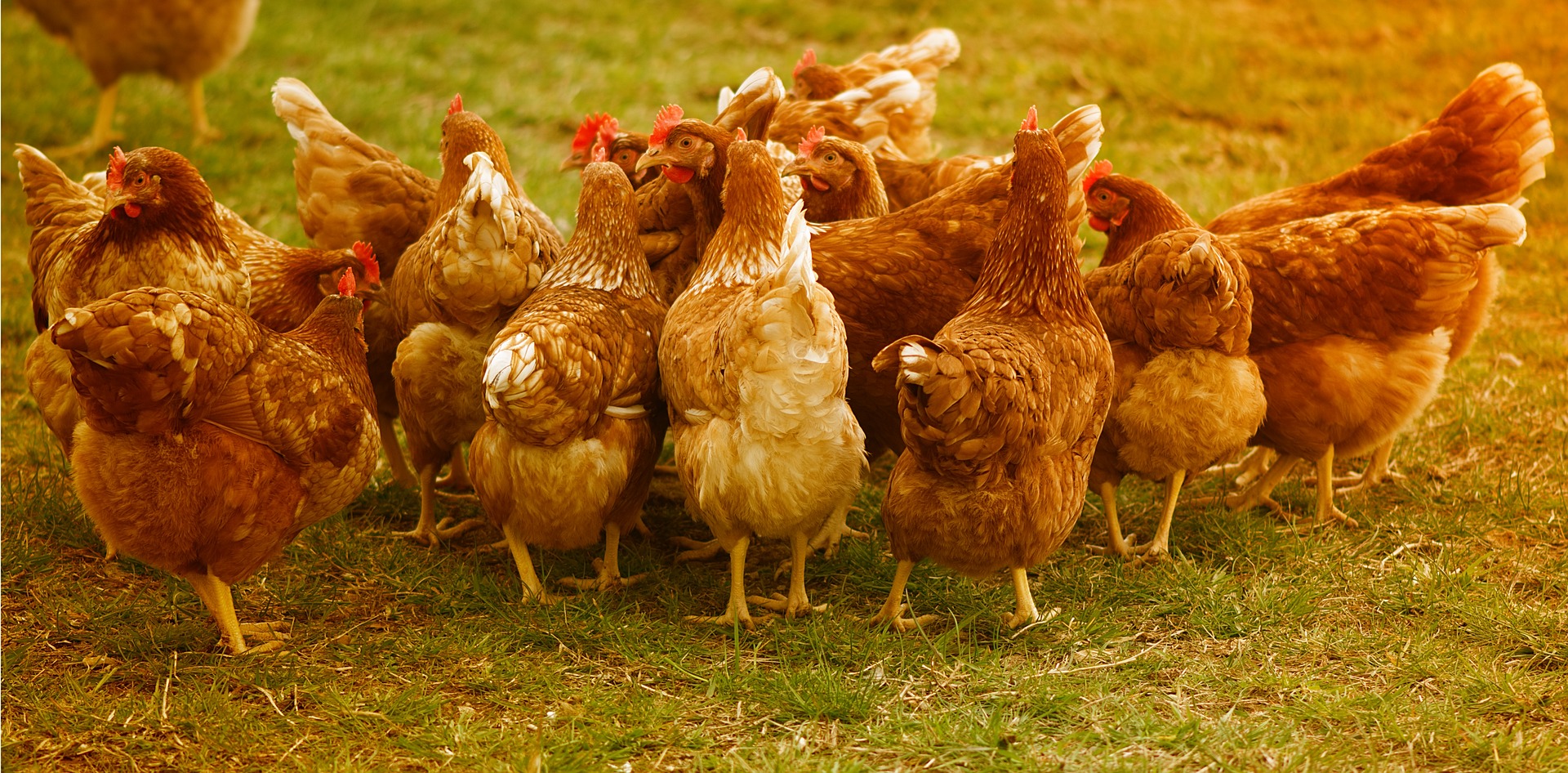
The importance of exogenous enzymes in poultry production
23 de July de 2020Fungi are microorganisms that can grow naturally on raw materials intended for animal feed. There are more than 10,000 species, although only 30% may have pathogenic potential. Fungi can grow during the cultivation or storage of raw materials, including wheat, corn, soybeans and rice. Storage of broken grains under conditions of humidity, heat and poor aeration promotes the proliferation of molds and yeasts. In addition, many yeast species are part of the normal microflora in the digestive tract of animals. The most prevalent fungi in raw materials are Aspergillus, Penicillium, Mucor, Rhizopus, Alternaria, Fusarium, Cladosporium and Trichothecene.
Feeds with high contamination by microorganisms have a reduced nutritional profile, altered palatability and increased likelihood of health and production consequences. The effect on the nutritional profile is varied: reduction between 5 to 25% of metabolizable energy; reduction of amino acid intake, decrease in the supply of certain vitamins and lower quality of digestible protein. There are organoleptic modifications of grains that can generate ration rejection, especially in pigs.
Digestive Mycosis
Mycoses are systemic diseases caused by the invasion of fungi into living tissues leading to their mechanical destruction. The causal agent of the disease is the fungus itself. These pathologies must be differentiated from mycotoxicosis, where the causal agent of the disease is mycotoxins, chemical metabolites produced by filamentous fungi.
Mycoses produced by fungi with the capacity to colonize digestive system tissues can be classified under the following pathologies:
- Candidiasis (Moniliasis): A disease known as “canker sores” in poultry farming. It is the most prevalent digestive mycosis. This pathology is produced by a varied group of yeasts of the genus They are usually found as flora inhabiting the mouth, crop and feed. They usually colonize the tissues in the case of stressful events that harm the physiological and immunological conditions of the animals. Digestive tract involvement is more frequent in young birds (less than 3 weeks old) than in older birds.
Affected poultry show poor growth, depression, diarrhea and dehydration that can lead to death. Lesions are usually limited to the upper digestive tract. Candida spp. colonizes tissues and forms hyperkeratosis or white fatty diphtheria membranes/pseudomembranes. These appear as multifocal to confluent spots in the mouth, pharynx, esophagus and crop. Raised, rounded mucosal ulcers are characteristic. Inflammation, catarrhal or necrotic exudate and eroded mucosa of easy detachment can also be observed in the gizzard.

A: Candida albicans. Gram stain. B: Cowl with a thickened appearance and presence of whitish pseudomembranes and a cheesy consistency. Arne and Lee (2020).
- Gizzard Mycosis: Pathology generated by filamentous fungi of the genus Fusarium, Aspergillus and The factors that predispose to this disease are the contamination of food with microbiological loads greater than 15,000 CFUs, the presence of trichothecenes and oxidized fats. At necropsy in poultry, it is possible to visualize erosive processes in the horny layer of the gizzard. Underneath, a whitish layer can be seen that corresponds to the development of mycelia of filamentous fungi.

A: Gizzard with presence of erosive lesions in horny layer. B: Presence of whitish spots on the inner side of the gizzard corneal layer.
- Mucormycosis: Rare pathology caused by opportunistic molds of the genus Rhizopus, Mucor and Systemic and pulmonary presentations are usually accompanied by joint conditions with Penicillium and Aspergillus. In advanced cases, conditions of the brain, gastrointestinal system and skin may occur. During necropsy, congestive Peyer’s plaques, inflammation of the ileocecal valve and multiple nodules in the abdominal cavity, lungs and air sacs may be observed. In a few cases, necrotic ulcers can be seen in the oral cavity.

Image: Mucormycosis in ileocecal valves.
- Torulopsis: Disease produced by the yeast Candida glabrata. It is a low incidence, under-diagnosed disease in poultry farming. It can be confused with candidiasis due to the formation of biofilms on the mucosa. A differential finding during necropsy is the presence of defined yellowish nodules of variable size in the liver.
- Megabacteriosis or Macrorhabdus: Rare pathology resulting from infection by Macrorhabdus ornithogaster. The microorganism is an opportunistic yeast that colonizes the isthmus between the ventricle and the gizzard. It is a chronic and progressively debilitating disease. In the necropsy, inflammation of the proventriculus and gizzard can be observed. Its diagnosis is made by laboratory culture to be differentiated from Candida spp due to its similar morphology.
Causes and predisposing factors
Certain risk factors exist that predispose to this type of digestive mycosis and aggravate the pathological processes. These include poor nutrition, vitamin D deficiency, lack of hygiene in facility management, stress, immunosuppressive diseases and prolonged use of antibiotics that suppress normal microflora.
For half a century, antibiotics at subtherapeutic doses have been used for economic and health benefits in poultry and livestock. In the short term, improvements have been obtained in production parameters, greater digestibility of nutrients, protection of the digestive and immune system of animals, and prevention against pathogen colonization. However, their prolonged, inappropriate and abusive use has led to worrying medium and long-term consequences. The main consequence is bacterial resistance, which consists of the mechanisms implemented by bacteria in order to survive exposure to an antimicrobial agent. The preventive application of antibiotics reduces some of the pathogenic bacteria in the intestine, but not their total elimination. This allows the specialization of microorganisms in terms of resistance and implies greater efforts in antibiotic therapy strategies for their elimination.
In addition, the xenobiotics used generate residues in by-products such as meat, eggs and milk. Foods for human consumption with trace amounts can generate resistance processes, which have public health implications. Based on these facts, many countries have restricted or banned the use of antibiotics without therapeutic purposes in animal production.
Thirdly, the application of antibiotics partially reduces the beneficial bacterial microflora involved in feed digestibility and nutrient utilization. The intestinal environment is a complex micro-ecosystem that must maintain a delicate balance. This elimination generates an imbalance that can favor the colonization of pathogenic microorganisms. This is the basis for the development of digestive mycoses, in many cases opportunistic.
The application of preservative substances to feed has been a strategy used to avoid the effects of antibiotic use. Organic acids are a category of products with well known advantages. However, they have gradually ceased to attract interest, as their effect has a short duration, limited action, reduced effectiveness over time, and have negative properties for operators and machinery. Some may alter the organoleptic characteristics of feed and generate rejection of ration consumption.
A possible alternative solution
One alternative that has become more relevant in the last decade is the use of preservatives based on natural botanical extracts. There are plants or parts of plants that concentrate microelements with microbiocide capacity. They allow to regulate and inhibit the proliferation of fungi and bacteria with pathogenic capacity, when they are applied to raw materials before their ingestion. The interest in botanical extracts has increased, since they present a wide spectrum of action, prolonged effect, safety in their application, the need for reduced doses, and do not generate bacterial resistance or residues in by-products. In many cases, they improve the palatability of feed stimulating its consumption.
MINERVET S.A. has developed a natural preservative called MINERMOLD. This additive presents a biocide action, unlike other conventional products which only act as bacteriostatics and fungistatics. Its mechanism of action prevents the presence and proliferation of microorganisms in feed, the production of new mycotoxins and the reduction of the nutritional properties of the ration.
It has been demonstrated that MINERMOLD can have a long-lasting effect of over five months from its first and only application. In vitro growth-inhibition tests with molds and yeasts (Candida spp.), it has been shown to be highly efficient and superior to the effect obtained with organic acids. Additionally, MINERMOLD has been shown to produce improvements in production parameters of pigs and broilers, in relation to weight gain, conversion rate and mortality rate. The results are linked to a lower microbiological load of feed, an intestinal environment conducive to a better use of nutrients and a decrease in the incidence of diseases.
Conclusion
The acquisition of quality raw materials in animal feed will always be a challenge for the producer. The use of antibiotics and other additives to regulate the microbiological load of feed has been controversial, and at times, has promoted the emergence of a variety of digestive mycoses as opportunistic diseases. Preservative additives formulated from botanical extracts have proven to be adequate, advantageous and competitive as a strategy to regulate microorganisms in food. Their action is reflected in the improvement of production and sanitary parameters of livestock farms, which is directly linked to a better economic valuation of the production system.
BIBLIOGRAPHY
- Arné P, Lee MD. 2020. Fungal Infections. In: Diseases of Poultry. 1st ed. p. 1109–1133.
- Dhama K, Sandip C, Amit V, Richi T. 2013. Fungal/Mycotic diseases of poultry diagnosis, treatment and control: A review. Pakistan Journal of Biological Science. 16(23):1626–1640. doi:3923/pjbs.2013.1626.1640.
- Ibrahim Z, Ali B, Ali R, Jarad A, Hasan M. 2019. Avian Candidiasis: A Review. International Journal of Pharmaceutical Research. 12(01): 1088- 1091. doi:31838/ijpr/2020.12.01.199
- Seyedmousavi S, Bosco S de MG, de Hoog S, Ebel F, Elad D, Gomes RR, Jacobsen ID, Jensen HE, Martel A, Mignon B, et al. 2018. Fungal infections in animals: a patchwork of different situations. Medical Mycology. 56: 165–187. doi:1093/mmy/myx104.
- Sugiharto S. 2019. A review of filamentous fungi in broiler production. Annals of Agricultural Sciences. 64(1):1–8. doi:1016/j.aoas.2019.05.005.

